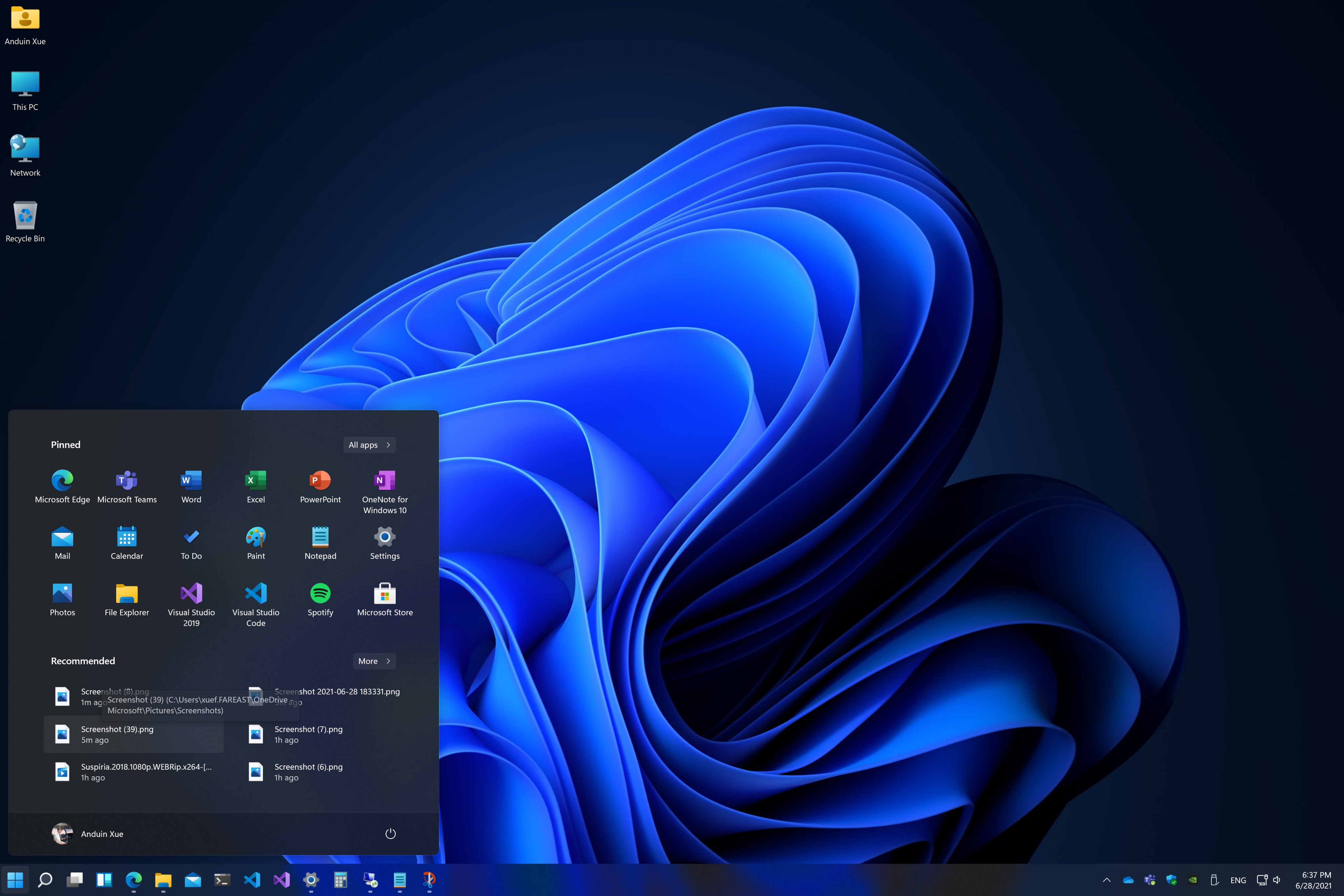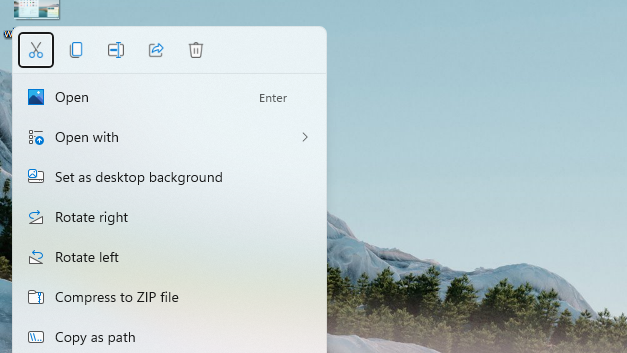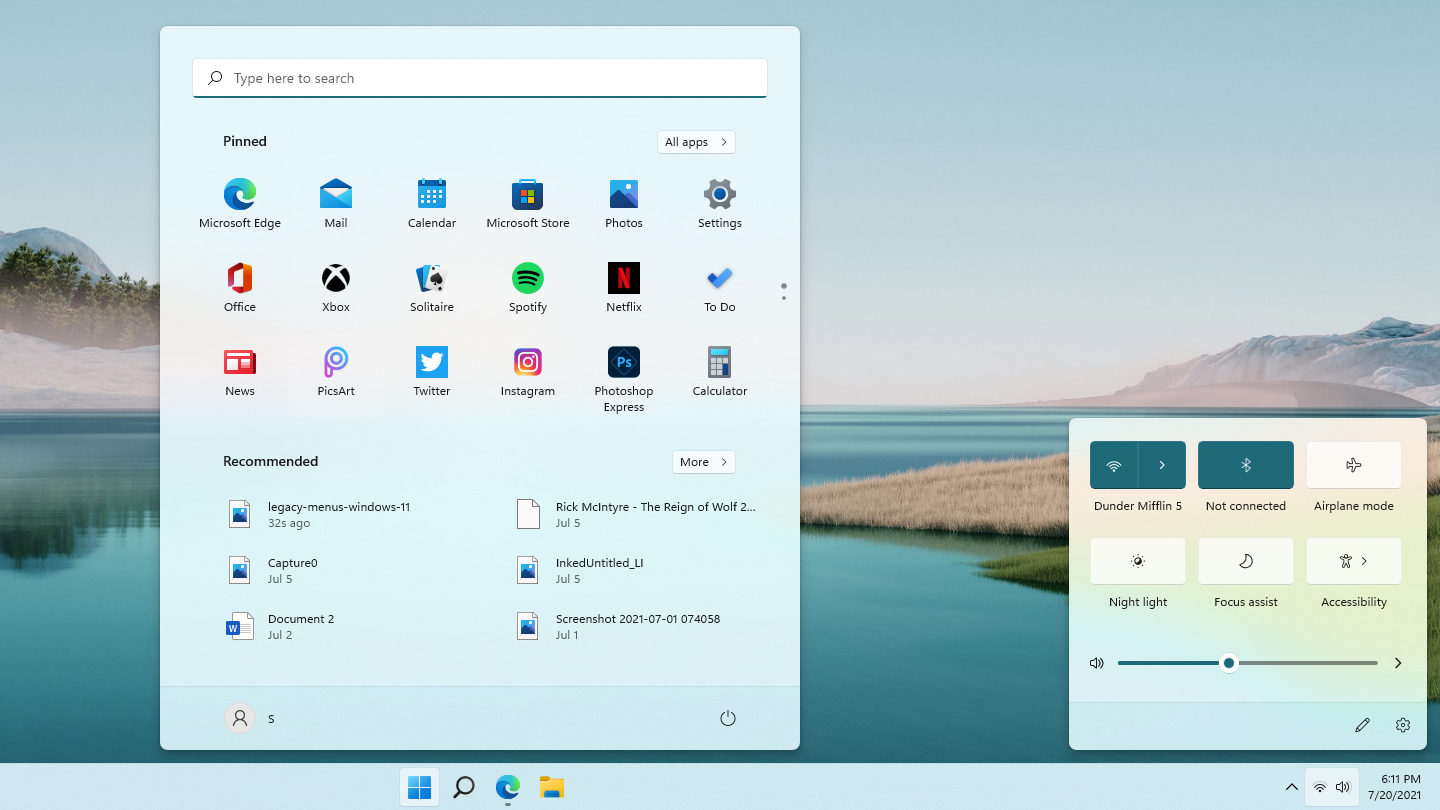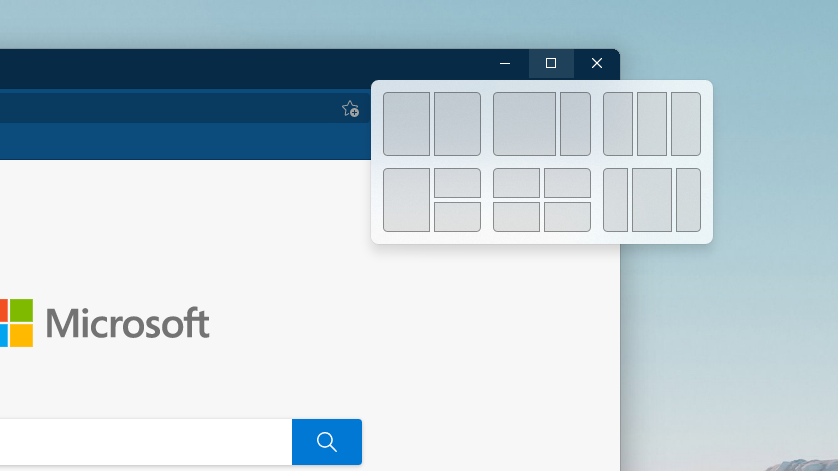Microsoft Windows 11 preview: This Mac user is tempted to switch
With Windows 11, Microsoft takes a huge leap away from the OS’s legacy reputation

Windows 11 marks a turning point for Microsoft’s decades-old OS. Not because of the centered start menu or the ambitious new Microsoft Store. But because when all put together, these individual changes ultimately build to what no previous Windows update has dared to do — make Windows look and feel less Windows-y.
Over the last few years, nearly all other major desktop operating systems, including macOS and Chrome OS, have stuck to a standard, foundational theme. They both feature, for instance, large tiles for quick settings such as Wi-Fi on the desktop and a full-screen app launcher with a sharp focus on the search tool.
- Best laptops in 2021
- Best college laptops for students
- Best MacBook in 2021: Which Apple is best?
Windows, in comparison, has continued with its more traditional setup with its nuts and bolts out in the open right away. If a driver software for a component in the CPU malfunctions, for example, the user has to take care of it, and they won’t have to dig deep either as its core facilities are accessible on the desktop itself. The Start Menu, the Taskbar trays overflowing with core options -- all these elements have allowed Windows to retain its original identity throughout generations.
While this identity has consistently enabled Microsoft to appeal to its legacy customers, it has also put Windows in a box. These hacker-esque and extremely hands-on characteristics, at the same time, have come at a cost: they’ve deterred any non-Windows user from considering a PC as their next workstation. If a failed driver is the first thing a willing Mac user has to take care of on their new Windows PC, they’re unlikely to stick around.
Windows 11, above all else, is designed to address many of these concerns. It’s intended for someone like myself, who left Windows after getting fed up with its often unnecessarily primitive interface.
No longer does Windows come off as a platform desperately trying to balance the old and the new. With Windows 11, Microsoft takes a series of bold steps, and in a lot of ways, it already seems like a triumph.

Windows 11’s fresh makeover is more approachable and buries traces of the old guard much deeper. The right-click context and file menus, for instance, are no longer a laundry list of options. They hoist up shortcuts for the handful of essential functions most people would use and hide the rest behind additional sub-menus.
Stay in the know with Laptop Mag
Get our in-depth reviews, helpful tips, great deals, and the biggest news stories delivered to your inbox.
Similarly, the new, open Windows Store has the potential to undo one of the OS’s most significant pain points. If all goes by plan, Windows users won’t have to deal with an assortment of installation methods and will be able to find apps right on the Microsoft Store itself.

Live Tiles from the disastrous Windows 8 era are gone too, and the quick settings, like macOS and Chrome OS, are now more in line with the times. In addition, the centered Start Menu is re-engineered for the modern age, and it now neatly displays your apps instead of listing each of their folders and corresponding installation files. It also intelligently suggests files and apps you may be looking for right on its home page.
The subtle animations add to these refinements. Little details like the rounded corners and how the Windows logo shimmers every time you launch the start menu aren’t tacky and imbue a sense of playfulness that previous Windows versions lacked.
Microsoft has updated some of Windows’ best features, like its excellent multitasking tools so that they’re easier to navigate and understand for non-pro users as well. Case in point: you can hover over an app’s resize button to instantly throw your open windows into a side-by-side layout.

For people who have been with Windows forever, the OS still manages to appear familiar. All the advanced options are here — it’s just that the majority of users don’t need them, and Microsoft finally realizes that.
The job is not done for Microsoft just yet. Various aspects of Windows 11 still appear like they’re at war with its predecessors and not aligned with Microsoft’s renewed direction. Switching Bluetooth devices, for example, takes way too many clicks, and it’s still relatively easy to end up in Windows’ legacy menus. Plus, several core apps, including the Task Manager, have yet to be brought up to speed with the latest makeover. Further, there are ads on the lock screen, and the strict compatibility guidelines have me worried about long-term support.

While I expect many of these issues to get patched as Windows 11 nears public release, it’s unlikely that Microsoft’s desktop OS will ever be completely free of its legacy roots. If Microsoft’s plans for Windows’ app store succeed, I also wonder if Windows still has room for a more straightforward alternate mode like the S Mode or even an offshoot of the dead Windows 10X — which was supposed to be a lightweight fork of Windows 10 — that could further tuck away the operating system’s more advanced sections.
Windows 11 turned out more promising than I initially thought it would. Microsoft’s desktop OS has always been perceived as the scrappy rival, while Mac is the one that “just works.” Microsoft has set its sights on the latter this time, and its OS now looks the part.
Microsoft came so close with Windows 10, but with a series of outdated ideas such as Live Tiles, it very much breathed the traditional Windows model. Although there are still traces of the old guard, Windows 11 appears to be on the right track, and most importantly, it does so without compromising on any functions. As a Mac owner, I’ve never been more tempted to switch.
Shubham Agarwal is a freelance technology journalist from Ahmedabad, India. His work has previously appeared in Business Insider, Fast Company, HuffPost, and more. You can reach out to him on Twitter.
